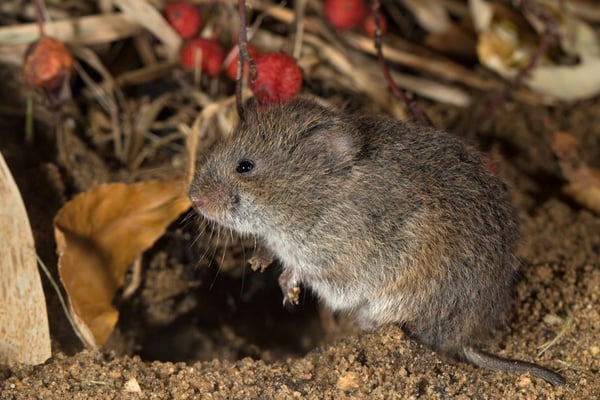Vole Yard Damage Solutions: Effective Control Methods
Vole Yard Damage Solutions: Effective Control Methods
Blog Article
Comprehensive Overview to Effective Vole Bug Control: Infestation Identification and Treatment Methods
In the realm of effective parasite control, vole invasions pose a distinct challenge that demands a strategic method. These little rodents, typically mistaken for computer mice, can wreak chaos on yards, grass, and crops if left unattended. Recognizing the indications of vole visibility and applying targeted therapy methods are essential components of an effective bug monitoring plan. By exploring the nuances of vole actions, comprehending essential signs of problem, and examining an array of control options, one can establish a comprehensive approach to battle these elusive insects.
Comprehending Vole Behavior
Vole behavior is identified by their tunneling routines and quick recreation prices, making them a challenging insect to manage successfully. These small rodents generally develop complex passage systems underground, utilizing them for shelter, food storage space, and transportation. Voles are herbivores, eating a range of plants, yards, bulbs, and roots, which can create substantial damage to yards, orchards, and grass. Their quick reproductive rate additional makes complex control efforts, with women efficient in generating multiple trashes in a solitary year, each including several offspring.
Recognizing vole habits is essential for efficient bug control strategies. By identifying their burrow locations, keeping track of feeding areas, and applying targeted control approaches, such as capturing or environment modification, vole problems can be managed efficiently.
Indicators of Vole Invasion
Avoidance Strategies
Implementing effective avoidance approaches is essential in decreasing vole invasions and guarding greenery from their destructive feeding practices (vole pest control). To prevent vole problems, it is essential to start by getting rid of possible food resources and sanctuary. Keep lawn and vegetation cut short, get rid of weeds and particles, and maintain a tidy garden or yard to make the location much less attractive to voles. Mounting obstacles such as equipment fabric or below ground secure fencing can additionally aid prevent voles from getting in certain locations. Additionally, minimizing excess wetness by fixing leaky pipes and making certain appropriate water drainage can make the environment much less friendly for voles.
Regularly evaluating the building for signs of vole task, such as paths and delve openings, is critical for very early discovery and prompt activity. If vole activity is suspected, think about making use of catches or repellents strategically placed click resources near their pathways.
Non-Lethal Control Methods
To efficiently take care of vole populaces while prioritizing gentle approaches, non-lethal control approaches use practical options for lowering vole damages in landscapes and yards. These barriers can be hidden at the very least 12 inches curved and deep at a 90-degree angle to avoid voles from tunneling underneath.

Lethal Control Options
One reliable approach for attending to vole problems in landscapes and yards entails the critical use deadly control choices. When confronted with a serious vole infestation that non-lethal approaches have stopped check this site out working to contain, carrying out dangerous control measures becomes critical. One generally employed lethal control alternative is the usage of breeze catches. These catches are designed to swiftly and humanely kill voles upon activation, making them a prominent selection for lots of gardeners and landscaping companies. To boost the efficiency of breeze catches, it is suggested to put them in areas where vole task is high, such as along paths or near burrow entries. An additional dangerous control choice is the application of hazardous baits specifically developed to target voles. These lures have poison that is consumed by the voles, bring about their eventual death. Care has to be worked out when using hazardous baits to avoid injury to non-target animals or family pets. On the whole, when using lethal control alternatives, it is necessary to do so sensibly and according to local policies to effectively manage vole problems.
Verdict
Finally, efficient vole bug control calls for a thorough understanding look at here now of vole behavior, identification of indications of invasion, implementation of prevention strategies, and usage of both non-lethal and lethal control approaches. By incorporating these methods, individuals can efficiently handle vole populaces and shield their building from damage. It is very important to resolve vole problems immediately to stop additional concerns and reduce the influence on the surrounding atmosphere.
Given the complex tunnel systems and rapid recreation prices particular of voles, identifying the signs of vole problem becomes vital in effective insect control. One of the main indications of vole existence is the existence of surface area runways or trails in yard or snow, usually concerning 1-2 inches broad, created as voles take a trip between their burrows and food sources.To properly take care of vole populaces while focusing on gentle methods, non-lethal control strategies offer useful services for lowering vole damage in yards and landscapes.One reliable approach for addressing vole infestations in gardens and landscapes includes the critical usage of lethal control alternatives. vole pest control.In verdict, efficient vole parasite control requires an extensive understanding of vole actions, identification of indicators of problem, execution of prevention approaches, and usage of both non-lethal and deadly control methods
Report this page